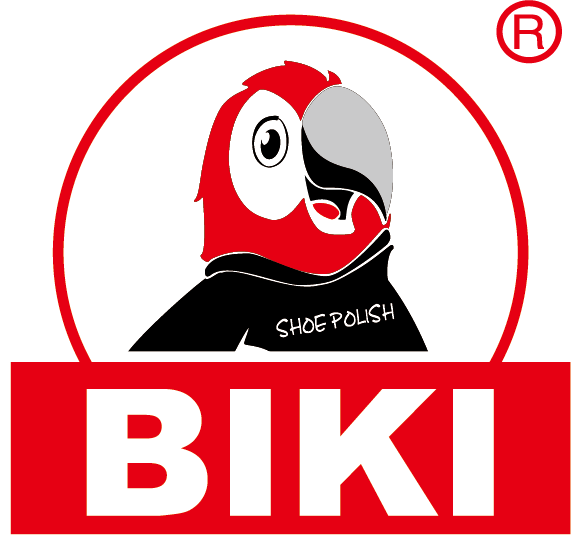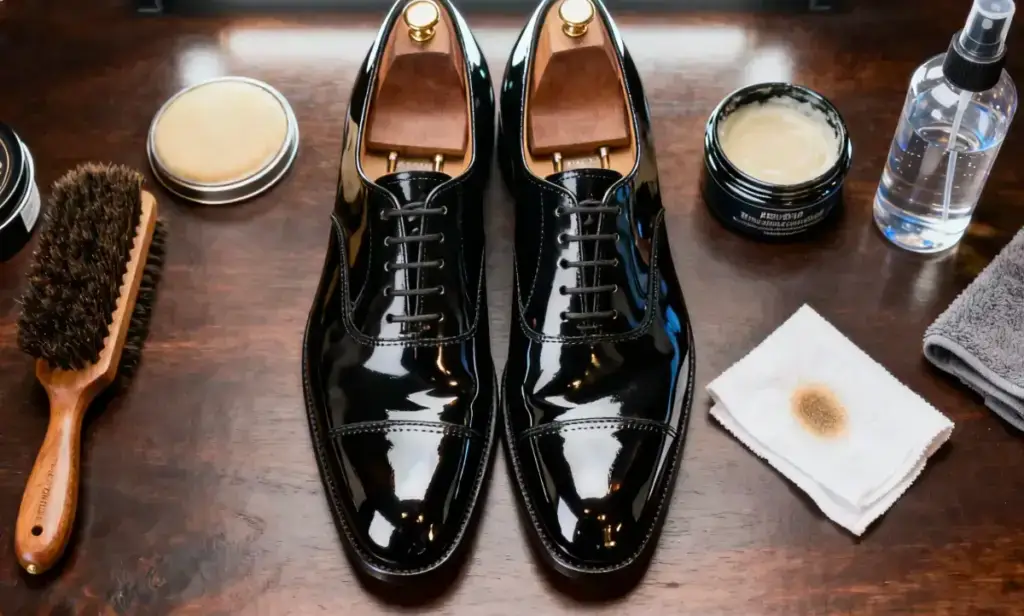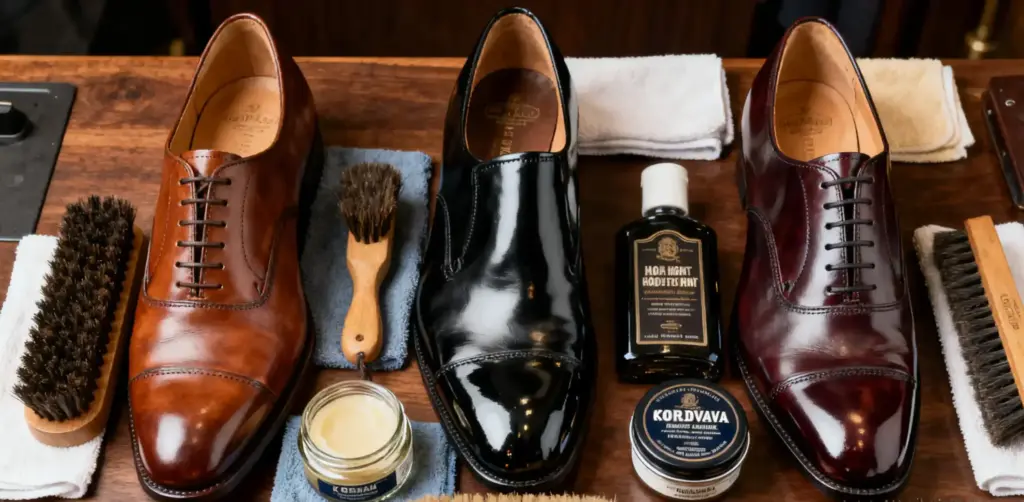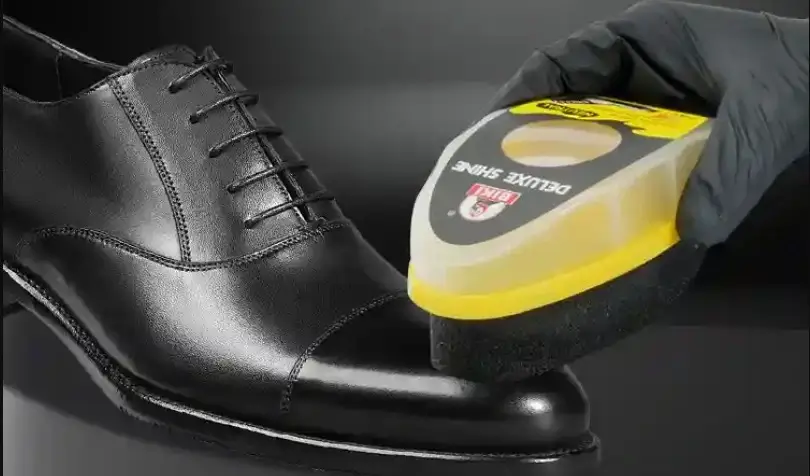Nowadays, many different sneaker cleaner products flood the market. It can be hard to choose between foam sneaker cleaner, sneaker cleaning wipes, and other options. This guide will help you learn about sneaker cleaning products. We will tell you what kind of sneaker cleaner is best for you.
Main Types of Sneaker Cleaners
There are four main types of sneaker cleaners.
Liquid and Gel Kits
This is the best choice for cleaning anything. Liquid and gel sneaker cleaning kits are the best for getting rid of tough stains and deep cleaning. You usually mix them with water to make a strong cleaning solution. These kits include brushes for thoroughly cleaning durable materials and midsoles.
Foam Sneaker Cleaners
A foam sneaker cleaner cleans your shoes like a “dry clean.” It works best on things that are fragile or don’t like water. The foam sticks to the shoe without dripping. It picks up dirt with very little water, which lowers the chance of color bleeding or water spots.
Sneaker Cleaning Wipes
These are great for quick fixes. When you’re out and about, sneaker cleaning wipes can help with spills and marks that happen quickly. They are already wet and ready to use. How do wipes for cleaning sneakers work? They use cleaning products that are gentle and dry quickly, leaving no mess. You can easily store them in your car or bag.
Ready-to-Use Sprays
This tool is useful for everyday tasks. Ready-to-use sprays are great for regular cleaning because they balance speed and cleaning power. The solution for cleaning shoes is already mixed and comes in a spray bottle. It’s great for light cleaning between deeper cleans because all you have to do is spray and wipe.
What Are You Really Putting on Your Sneakers?
To really get what sneaker cleaners are, we need to look at what’s in them. Knowing what’s in sneaker cleaner will help you pick the best one for your shoes.
Surfactants
The surfactant is the most important part of any good shoe cleaner. One end of these molecules pulls in water, and the other end pulls in dirt.
These molecules grab onto dirt when you scrub with a brush. Then, the ends that like water help lift the dirt off the shoe. This is how to clean all kinds of shoes.
Surfactants are very sensitive to quality. Natural sneaker cleaners often have plant-based surfactants from things like coconut oil that work better. These are better for the environment and don’t hurt shoes as much.
Conditioners and Solvents
The main solvent in cleaners is water. Some formulas also have special solvents that work better to get rid of oil stains.
A good cleaner does more than just get rid of dirt. Leather sneaker cleaners and other high-quality products have conditioning agents like glycerin in them. These ingredients stop leather and other materials from getting dry and stiff after cleaning.
Ingredients for Specialty Cleaners
Some cleaning products are made for certain tasks. A cleaner for white sneakers might have stronger chemicals to get rid of scuff marks on rubber midsoles.
Mild alcohol is often found in sneaker wipes. This helps the cleaner dry quickly so that there are no streaks or water marks.
Cleaner Ingredient Comparison
This table shows what you’ll find in each type of cleaner.
| Cleaner Type | Key Ingredients | Primary Function | Ideal For |
| Liquid/Gel Kit | Concentrated Surfactants, Conditioners | Deep Cleaning, Stain Removal | Heavy-duty cleaning, midsoles |
| Foam Cleaner | Milder Surfactants, Foaming Agents | Gentle “Dry” Cleaning | Suede, Nubuck, Knits |
| Cleaning Wipes | Diluted Surfactants, Mild Solvents | Quick Spot Removal | On-the-go emergencies |
| Ready-to-Use Spray | Pre-diluted Surfactants | Light, Regular Maintenance | Daily touch-ups |
How to Choose the Right Cleaner for Your Sneakers?
To get the best results, you need to match the right cleaner to the material of your sneakers.
For Knit and Canvas
Foam sneaker cleaner is the best choice for these types of shoes. Liquid cleaners can make knit fabrics like Primeknit, Flyknit, and canvas too wet.
These materials can stretch and bend if they get too much water. Foam cleans the surface without getting the fabric wet.
Use a soft brush with foam cleaners. To get rid of dirt without hurting the fibers, work in gentle circles.
For Leather and Synthetics
Use a spray or a liquid/gel sneaker cleaning kit on leather and synthetic uppers. These materials can handle more water when you clean them.
A good leather sneaker cleaner has conditioners that help keep the leather soft. Wipe with a damp cloth after cleaning to get rid of any cleaner that is still there.
For Nubuck and Suede
You have to take extra care of these things. A foam or special “dry clean” kit is usually what you should use to clean suede sneakers.
Too much water can ruin suede and nubuck. Too much moisture can change the color and texture for good.
Put foam on a brush first, not right on the shoe. Instead of scrubbing hard, gently dab the area that is stained. Use a suede brush to bring back the soft feel when it’s dry.
For the Midsoles and Outsoles
Use the strongest cleaner on the parts of your shoes that get the dirtiest. For these areas, a liquid or gel shoe cleaner works best.
The parts made of rubber and foam get the dirtiest. They need a strong cleaning solution and a stiff brush to get back to looking new.
This is where a sneaker cleaner for white shoes works well on yellowing, but it takes some work.
For Retailers & Brands: Curating a Winning Sneaker Care Program
Stores and brands that sell sneaker care products keep customers coming back and make more money. Planning is important for a good program.
Smart Product Mix
The right products are needed for a program to work. Your main, high-profit item should be a full set of sneaker cleaning supplies.
Put sneaker cleaning wipes near the checkout counters so people can buy them on the spot. Because they are cheap, it’s easy to add them to a purchase.
Add a unique item, like a cleaner for suede sneakers. This shows that you know what different sneakers need.
Bundling and Upselling
Include sneaker care in the sales process. Teach your employees to offer a cleaning kit with every pair of sneakers they sell.
A simple question can boost sales. Asking “Would you like to add cleaning wipes to keep your new shoes fresh?” can help you sell more.
Using Education as Marketing
Teaching customers is a great way to market. Make content that shows people how to use shoe cleaner correctly.
A smart customer knows why special sneaker cleaners work better than regular soap. They know how useful your products are.
Finding a Partner for Shoe Care
To make this program, you need a good supplier. Biki is a dependable shoe care partner that can give you all the sneaker care products you need for your store. They have private label shoe cleaner and bulk shoe cleaner options for brands.
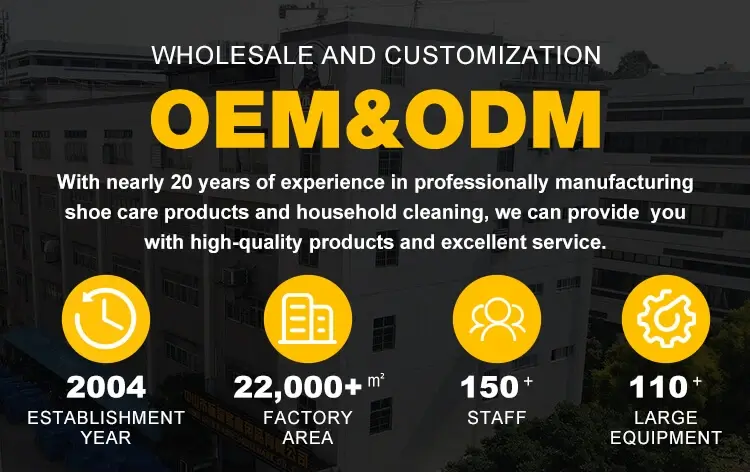
Final Thoughts
You should make it a habit to take care of your sneakers. Having the right tools makes this easier.
The Right Cleaner Is Important
There isn’t just one “best” sneaker cleaner. The right choice depends on the type of shoe and how dirty it is.
The best thing to use for that job is a foam cleaner that saves suede shoes. For that job, you need a strong liquid that can clean a white midsole. It’s important to know the difference.
Your Sneaker Care Checkup
Take a look at your own collection. Find the main materials and check your cleaning supplies. Check that you have the right things for your shoes.
We can help retailers and brands who want to improve the customer experience and create a profitable care program. Get in touch with Biki to find out about private label and wholesale sneaker cleaner options.
